Written by Obi Nwakanma
Sunday, 30 March 2008
IF you asked most people today to go to Aba or Onitsha to settle and live, the first impulse would be to think that you are placing a curse on them. And I am totally serious. Young men and women, the most productive and active catalysts of city life, do not find any incentives to go to these once thriving cities of the East to settle, and live a full life.
I once asked a friend of mine who grew up in Onitsha, and who now teaches at the University of Denver, Colorado, if he could ever think about living in Onitsha or raising his children in Onitsha, and his response to me was quite frank: “there is nothing for me in Onitsha!” he said.
It was no longer even the city in which he grew up. The decay of a city like Onitsha is so terrifying that an encounter with both the image and reality of the city is nightmarish - a true ghostly miasma that is.
Until you have felt and seen it, it is quite unimaginable. The sludge of human and industrial waste that runs on the public and private spaces; the sense of the brokenness of everything; the disorder in city planning; in code enforcement; in street planning; in the general ordering and layout of the city makes Onitsha today, one of the most polluted and certainly one of the most ungainly sites of human habitation anywhere on God’s earth.
Yet encrusted in that pod of waste is a possible gem; a once well planned city which becomes only clear from the air, which has only been distorted by the barbarous rage of a most philistine generation for whom beauty and civility are alien values.
Onitsha still has some of the finest colonial architecture which are indeed great set pieces and which could just be rehabbed with a little imagination, care, and some respect for heritage. Yet also, Onitsha is dotted with some of the most monstrous forms of architecture, a pretence at the high-rise apartments, which give little room for aesthetics. The buildings are often largely utilitarian.
They are most times constructed with little rhyme or reason, possibly inspired by the competitiveness of the Onitsha landlord who draws the design on the sand, and builds just to prove to everyone else that his “four decking is higher than yours.”
The result in Onitsha, as one drives in, is a sense or an impression of a vast project – those low income, box-like constructions of high-rise apartments that dot the landscape of American urban ghettoes that are infested with drugs, prostitution and poverty. I have nothing, of course, against urban housing, but let it be built with respect for the people, with a sense of spatiality, with some aesthetic purpose.
Onitsha’s image suffers from its certain lack of awareness of its own history or importance. My early vision of Onitsha was shaped by an early encounter with Chinua Achebe’s novella, Chike and the River, a book I read in primary five.
I also associated Onitsha with what one imagined to be the magnificent bridge across the Niger at Onitsha, which even now, remains as powerful as New York’s Brooklyn Bridge, as an authentic symbol of Nigeria’s entry into high technological modernity.
The Brooklyn Bridge has been celebrated in the epic poetry of great American Romantic and modernist poets like Walt Whitman and Hart Crane, but not the bridge across the lordly Niger in Onitsha. Onitsha was for many years the cultural and commercial center of the East – something of the Boston of Southern Nigeria – with its place as the epicentre of Christian missionary movement into the Igbo heartland.
For many years, it was the headquarters of the Church of the Niger. It was the city of Basden and the Archbishop Denis, as well as the Joseph Shanahans. Those icons of the Roman and the Anglican churches, who ironically were also figures of early Igbo modernity of the late 19th century.
Onitsha was the intellectual capital of Southern Nigeria, with its famous parochial schools, like the Christ the Kings College, the Catholic boarding school for boys, or the Denis Memorial Grammar School, the Anglican equivalent, or the Queen of the Rosary School, the Catholic boarding school for girls, or the famous St. Charles Teachers College, and so many pioneer schools that made Onitsha the gathering of the early Igbo towards cultural modernity.
It was the city that drew the great generation of Igbo, and indeed Southern Nigerian modernists. The city of the great Zik, whose statue still adorns an important historical site of the city; the city of Denis Osadebe, Mbonu Ojike, Nwafor Orizu, Ikejiani, Raymond Amanze Njoku, Pius Okigbo, Chike Obi, Sylvanus Cookey, Birabi, Ben Enwonwu, Cyprian
Ekwensi, and too many others too numerous to mention.
It was the city, whose centrality in the evolution of modern Nigerian culture has been recorded permanently in Emmanuel Obiechina’s canonical study of the literature now called, “Onitsha Market Literature,” produced in the great forges of its little presses, much like the grub street, which basically disseminated the most significant tradition of city penny literature in that march towards the modern. Onitsha once had a great newspaper too: the Nigerian Spokesman, which gave this city its
certain flavor.
I could go on and on, but I hope the picture is clear, that from the time of the Saro and Caribbean middle class of lawyers, doctors, teachers, and so on, who first constituted the society and culture of Onitsha, of the Onitsha Literary Society, funded by a remarkable whiteman whose grave is still marked in one silent corner of the of the Onitsha city cemetery, to today, a city like Onitsha has undergone radical transformation. A cultured middle class seems absent.
The city exhibits the marks of dystopia. Yet it is a city of possibilities, if only the Anambra state government, can think slightly out of the box and commence an ambitious City redevelopment plan, by bringing a number of things to bear: the reconstitution of Onitsha as a Metropolitan district with its own city government, and execution of a plan that would integrate Ogidi, Obosi, Nnewi, Oba, and the surrounding districts, as part of the conurbation of a new Onitsha Metropolitan District.
This metropolitan authority should then think about raising property and other municipal taxes and begin the very clear process of redesigning and rebuilding Onitsha as a modern, 21st century city that should integrate the grandeur of its own history as the first epicenter of Igbo modernity, and promote that history as part of its culture and image, and
its new offering.
This is what great cities do. It should also work inexorably towards the development of its valuable water front into a great residential, business and culture district, with splendid private and public residential facilities, fine offices, great restaurants, galleries, theatres, well designed public parks, and such a place that would draw people to its profitable use, and that would enrich the city significantly; and in some ways, connect it to its twin city across the river, Asaba, for the
benefit of all.
This is the only way to stimulate growth and economic development on a scale that is purposive and significant. I have used Onitsha clearly as a foil even in my description of the other city, Aba. I have always said that one of the most important reflections of the kind of mindset that have destroyed once well-made cities like Aba, designed by Pius Okigbo as Development Officer in 1947, is in the destruction of the Aba golf course and its parceling off to speculators who quickly turned this once beautiful place into a monstrous space.
Aba and Port-Harcourt are also inevitably bound to shake hands and rejoin themselves at the hip, as it was once conceived, sooner than later.
And so it is important for the authorities in those two cities to begin the process of joint planning and remodeling, including creating joint sewer districts, protected forest areas, river and lake recreation areas, that would link the triad development from Owerri, Aba and Port-Harcourt, starting at the Owerrinta Port, near Okpala.
But as it is, it seems like very little thinking is going on at a grand scale in government. These cities cannot recover their economic powers, if they do not attract the right kind of human energy. It is imperative therefore, to draw people back, with great schools, great city hospitals, great museums and galleries, and generally, great environments to live and nurture families in a healthy and sustainable way
Tuesday, April 1, 2008
Subscribe to:
Post Comments (Atom)


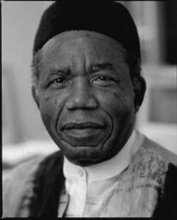


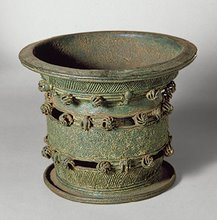

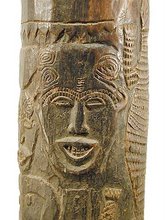

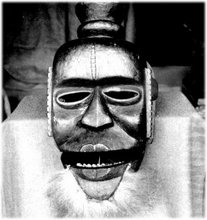

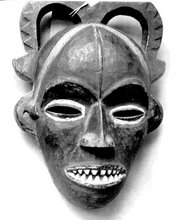

No comments:
Post a Comment